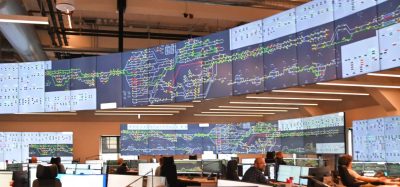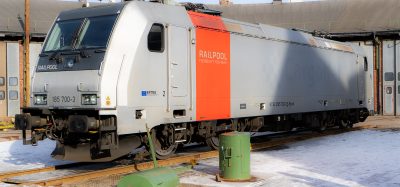GSM-R from Nokia Siemens Networks – the fast track to efficient railway communications
Posted: 28 January 2010 | | No comments yet
Today’s railway networks are undergoing a renaissance. With high-speed lines competing for much of the business of short haul and domestic air traffic, railways are attracting passengers at an ever growing rate. Modern digital communications technology is ready to support this transformation.
Today’s railway networks are undergoing a renaissance. With high-speed lines competing for much of the business of short haul and domestic air traffic, railways are attracting passengers at an ever growing rate. Modern digital communications technology is ready to support this transformation.
Today’s railway networks are undergoing a renaissance. With high-speed lines competing for much of the business of short haul and domestic air traffic, railways are attracting passengers at an ever growing rate. Modern digital communications technology is ready to support this transformation.
In their efforts to draw more passengers to their services, train operators are renewing their rolling stock, improving their infrastructure and offering better passenger facilities. This commitment also focuses on the technology that ties everything together – their communications systems.
Many railway operators currently find themselves dependent on a legacy of incompatible and outmoded communications systems. With separate networks for train control, tunnel communications, shunting, maintenance and train-to-track radio, communications costs rise while the myriad systems fail to offer the integrated functionality that a modern railway needs.
The complete railway solution
To help railway operators meet these challenges, Nokia Siemens Networks has produced a railway communications solution based on GSM-R, a standardised and integrated communications network system that handles all the voice and data needs of a modern railway.
GSM-R is an international standard based on well-proven GSM mobile technology and offers one integrated system for all railway voice communications.
A set of powerful functions
Specific, standardised railway functionalities, like Group Call Service, Broadcast Service, enhanced Multi-Level Precedence and Pre-emption and Emergency Call functions, provide the highest operational safety for train drivers and the responsible controller.
Furthermore, with Functional Addressing, the controller can dial the train number to instantly contact the train. Location Dependent Addressing guarantees secure communication between the train driver and the control centre responsible for that section of track.
GSM-R also offers a data platform for functions such as supervision and automatic train control, maintenance data, telemetry, security and passenger information. It is a key component of the European Train Control System (ETCS) that all high-speed trains in Europe will be running.
A truly global standard
Within a decade, all European railways and many of the larger rail operators in other regions, including Australia, China, India, Middle East and South America will be relying on GSM-R communications to run their networks. This is the Nokia Siemens Networks vision for GSM-R, the communications technology that is helping rail companies to compete and win market share in passenger and cargo transport.
An experienced partner
Railway operators looking to improve their communication systems need a partner with real insight into railway operations. Nokia Siemens Networks has this insight through its close relationship with Siemens Transportation Systems. This relationship is a tremendous asset for railway operators as Nokia Siemens Networks has a local organisation to implement and manage each project with complete knowledge of railways and relevant safety considerations. Our engineers are certified to work in this environment, helping us ensure a delay-free, cost-effective project.
Our track record in GSM-R projects is unrivalled. With 25 landmark commercial projects and five test networks to our credit, covering tens of thousands of kilometers of track, countless tunnels and untold numbers of trains, Nokia Siemens Networks GSM-R networks serve railways in Switzerland, Sweden, Italy, the Netherlands, Spain, the UK, Belgium, Finland, Greece, India, China, Australia, Saudi Arabia, Tunesia, Turkey, Germany and Norway’s entire railroad network.
Our GSM-R references include the Chinese Ministry of Railways (MoR) and the China Railway Signalling and Communication Corporation, which chose Nokia Siemens Networks to provide a GSM-R network for the longest high-speed railway in the world. The planned 968km Dedicated Passenger Line (DPL) is in southern China between Wuhan and Guangzhou. Nokia Siemens Networks has undertaken five of the total seven GSM-R passenger-dedicated line projects in China that are under construction or have already been put into operation.
An evolving system
As train operators improve their operations and demand higher standards, GSM-R is evolving with them. We are committed to the R&D needed to make a good system even better, one that will continue to meet stringent demands.
Nokia Siemens Networks makes a strong contribution to GSM-R standardisation, continuing the work successfully conducted since GSM-R began in the mid-1990s.
Improvements in the pipeline include better communications in shunting yards. A revision of the GSM-R specification will improve the quality of communications for many trains located in a small area by making better use of available spectrum.
Many train operators run cross-border services. Today, some locomotives that cross borders need several different train protection systems. New specifications are not enough to allow trains to cross borders. A train protection system, based on new specifications, will enable seamless border crossings.
There will also be an enhanced Railway Emergency Call. Refinements will give a much more precise distinction between emergency call areas, allowing better handling of parallel lines and avoiding emergency calls being received by unaffected trains, which can disrupt services unnecessarily.
All these developments are influenced and supported by Nokia Siemens Networks, and will improve our GSM-R solution and provide even better, more effective operations for railway customers.
A continuing commitment to success
Long-term support and a commitment to their success are qualities that our railway customers look for. We are capable of providing complete railway communications, from technical consulting through to turn-key projects and even operating the communications network on behalf of the train operator under Build-Operate-Transfer projects.
As well as GSM-R technology for operational communications, Nokia Siemens Networks is also pioneering new solutions for rail passengers. For example, we are bringing broadband Internet access on-board high-speed trains based on satellite, GPRS, UMTS and WLAN technologies.
Railway communications is a key business area for Nokia Siemens Networks, one that we will continue to support fully for decades to come.
Nokia Siemens Networks Video Surveillance for trains promotes safety and security
Security is a top priority on railway and other public transit operators’ agendas. And it can make or break campaigns aimed to get more people on-board trains and public transportation. CCTV in the vehicle is one of the most effective ways of advancing the cause of security and protecting passengers, rail staff and property.
Nokia Siemens Networks GSM-R technology is already well-established as a means of keeping on-board personnel in touch with controllers and other land-based rail network personnel. Now, our on-board WLAN facility brings all the possibilities of broadband communications to moving trains, including the ability to handle streaming video.
The result is the Nokia Siemens Networks Video Surveillance (CCTV) application, which is part of the comprehensive Nokia Siemens Networks Railway Communications Solution. The application can be tailored for any type of train, from international services to commuter shuttles. The result is a real-time, high-quality video surveillance system that supports on- and off-board recording and automatic video analysis, with alarm distribution over various broadband access types like WLAN, or the GSM-R network.
Partnering with market-leading railway application developers, we offer best-in-class video surveillance solutions and enhance them with best-in class-mobility. Part of our Railway Solutions offering, our brand of CCTV delivers security-related information in real-time to the train driver on-board and any control centre along the way. This is not the passive camera setup of yesterday; it’s an intelligent system with remarkably advanced features that alert the right people via broadband or GSM-R and prompt appropriate action. A case in point is its ability to learn from video analyses and trigger alarms for predefined incidents, for example, if a passenger enters a restricted area or commits an act of violence. Nokia Siemens Networks-supported video surveillance promotes passenger safety and safeguards railway property. It’s a versatile, powerful, real-time video surveillance system suitable for everything from international trains to commuter shuttles.
Nokia Siemens Networks is a pioneer of GSM-R technology, complemented by on-board WLAN to bring all the benefits of broadband communications to both train operators and their customers.
To learn more, please visit: www.nokiasiemensnetworks.com/rail








